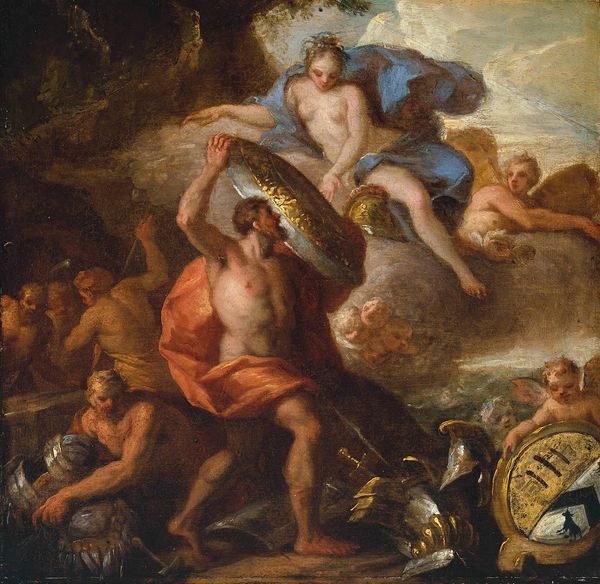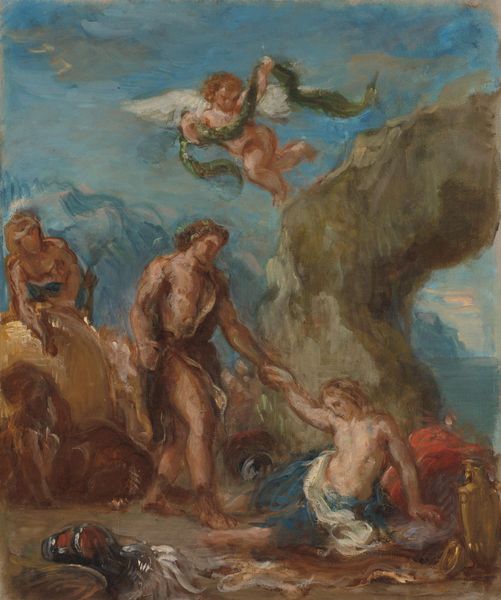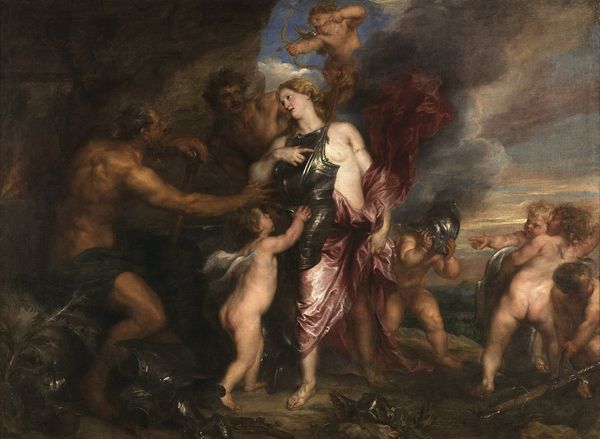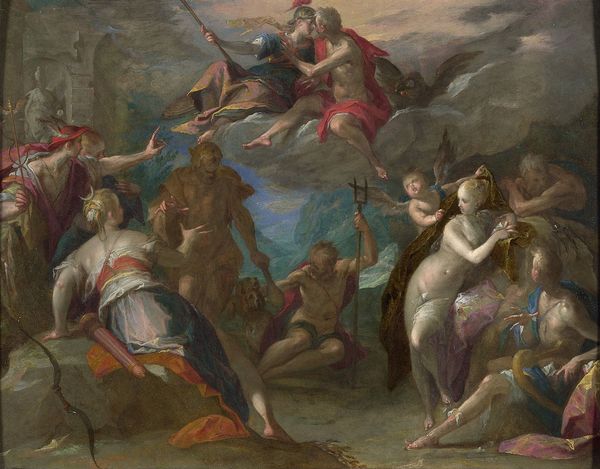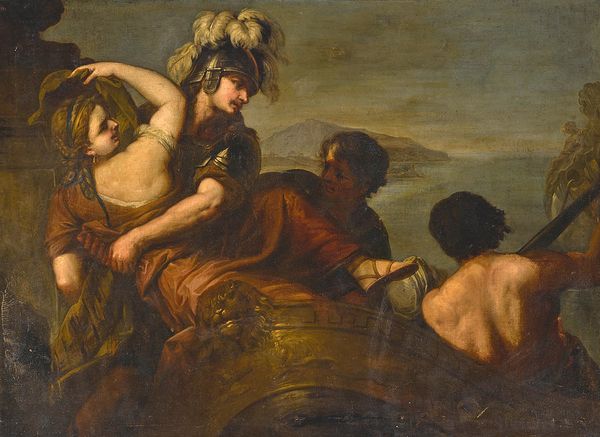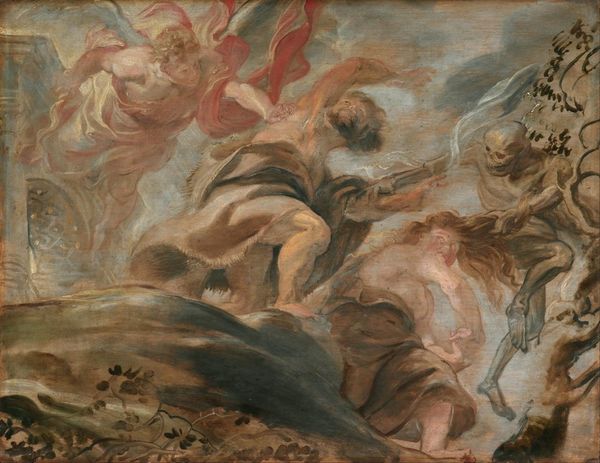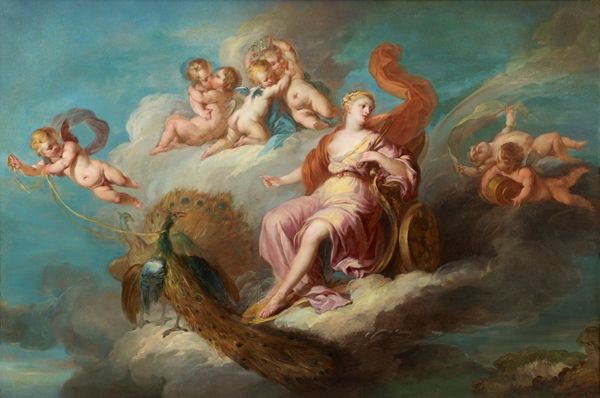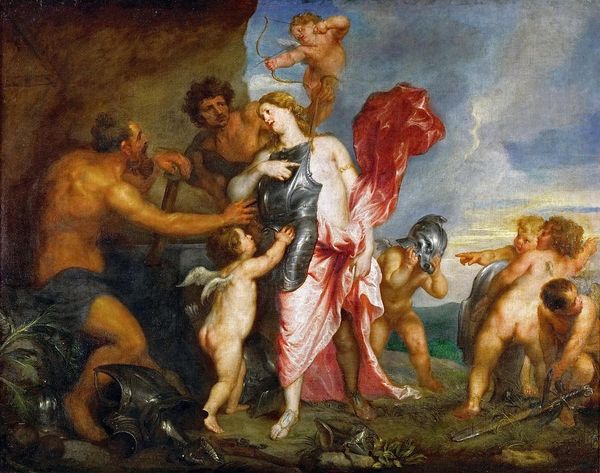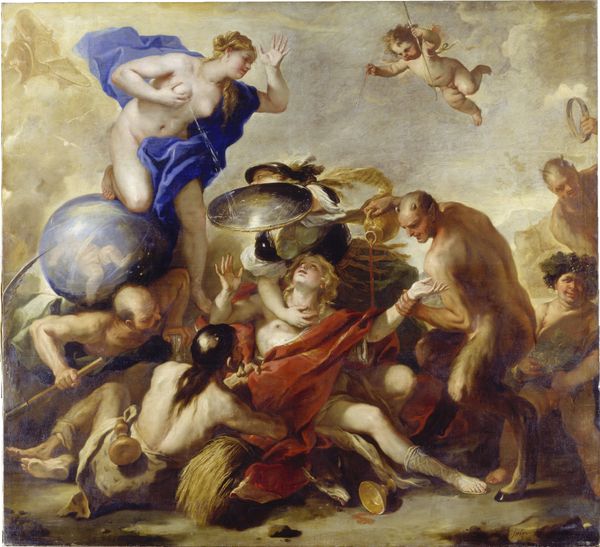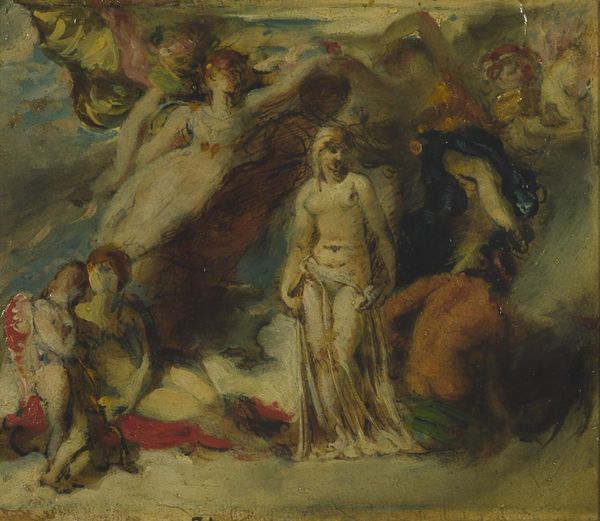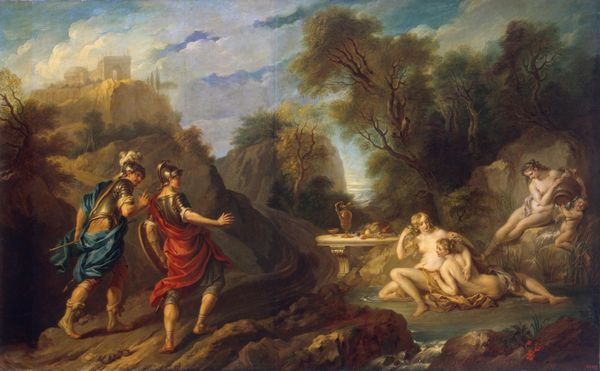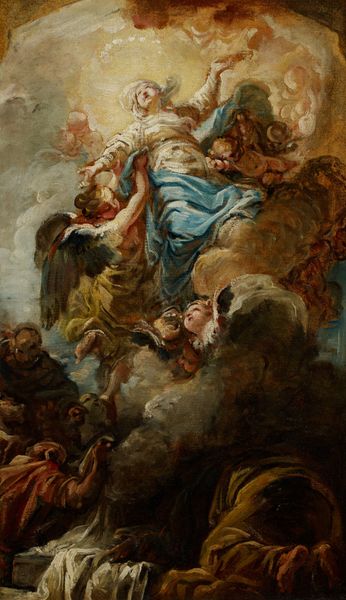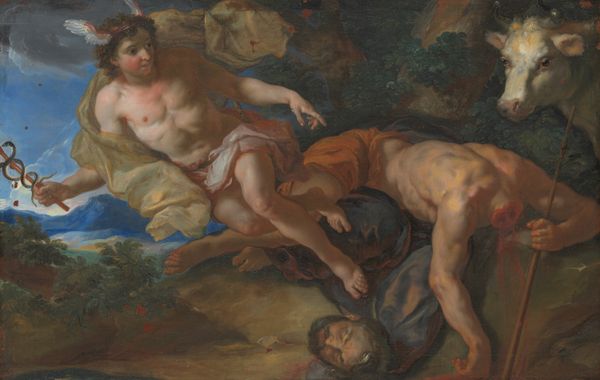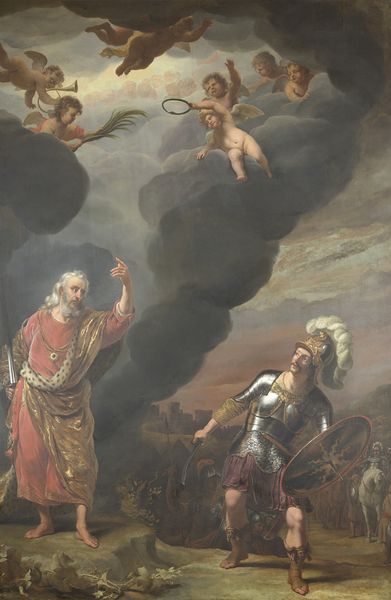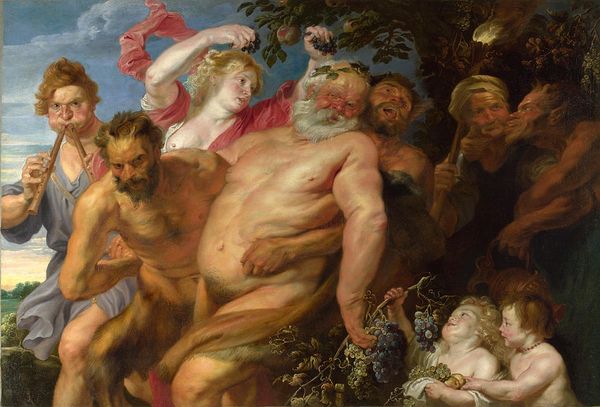
Dimensions: 196 x 165 cm
Copyright: Public domain
Curator: Eugène Delacroix's 1863 painting, *The Autumn Bacchus and Ariadne*. What are your first impressions? Editor: A flurry of figures. Bacchus, certainly, but everyone is cast in very mutable light. I would say the work seems energetic, maybe a bit sentimental even, for all the bodies we see. Curator: Delacroix masterfully manipulates the oil paint here to create a dynamic interplay between the earthly and the divine. Note how the fluid brushstrokes lend a vibrant energy to Bacchus's musculature as he offers his hand. Look how it echoes down to the golden cup there at the bottom right. Editor: How does Delacroix navigate the cultural understanding of these characters and how did the original audiences perceive Bacchus, the god of wine, here paired with Ariadne? Their story, their myth... it feels very personal within the grand scale. The social norms he is working within… Curator: The romantic spirit deeply informs his technical decisions, favoring raw emotion through intense coloration, with his visible, unrestrained brushwork. It’s all surface play! The light glimmers; and it's far more about affect. The tension in color! Notice how he directs our gaze by opposing the earth tones with cerulean touches above! Editor: Yes, and those sky tones—and cupid above—certainly evoke the broader culture of mythological painting common in public salons, legitimizing both artist and setting by placing a lens on very human needs like celebration. Curator: And look closer: notice the way he constructs the figures with a kind of sweeping anatomical liberty; he cares little for conventional realism. His genius lies precisely in such visual distortion to heighten a mood. The emotional tenor! Editor: It feels as though Delacroix consciously creates this dialogue between academic form and something approaching a challenge to such formality through theme, subject. We find something much less academic about raw celebration here… something vital that spoke to social anxieties, as well. Curator: Ultimately, it becomes a very potent example of how a painter's treatment of form and surface alone shapes meaning. The sheer facture conveys it. Editor: Agreed. I see a culture attempting to understand pleasure and authority, desire and the permission for desire through imagery.
Comments
No comments
Be the first to comment and join the conversation on the ultimate creative platform.
